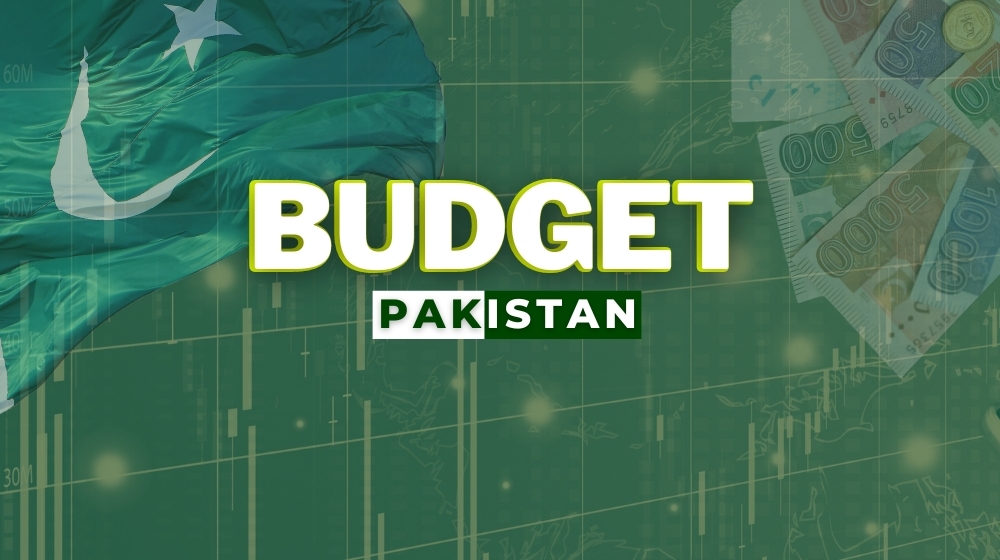The coalition government is all set to present its first budget for FY25 on June 10, 2024, in the parliament.
This timeline also correlates with the news, whereby, it was mentioned that the Staff Level Agreement (SLA) may be announced formally by the end of June 2024 or early July 2024, after assuring satisfactory compliance with prior actions and amendments in some tax laws through Finance Bill 2024-25.
The Budget FY25 is likely to be the prior action of the IMF, and this will be key in taking Pakistan near to the SLA.
The budget will aim at targeting a primary surplus of Rs. 500-700 billion or 0.4-0.5 percent of the GDP along with an FBR revenue target of Rs. 11-11.5 trillion, up 18-20 percent from this year’s estimated numbers of Rs. 9.2-9.4 trillion.
Major Revenue Measures Likely in New Budget
The government may propose revenue measures like:
- increase in GST by 1% to 19%,
- introduction of tax on pensioners,
- removal of exemptions on FATA/PATA,
- increase in tax rates on non-tax filers,
- Carbon Tax or increase in Petroleum Development Levy (PDL),
- Personal income tax reforms,
- tax on retailers and wholesalers,
- increase in FED on cigarettes, and
- Removal of exemption or increase in sales tax on goods mentioned in Schedule 5, 6, and 8 i.e. Pharma, food amongst others.
Revenue measures taken by other countries in IMF programs are
- Introduction of Gift tax, wealth transfer tax, and inheritance tax,
- removal of sector-specific exemptions and reduced corporate income tax rates,
- imposing VAT on nonresidents’ E-commerce,
- Streamlining VAT laws and removing VAT exemptions,
- eliminating tax exemptions for SOEs,
- environmental surcharge on multiple car ownership, and
- Increased tax on land registration and foreign travel among others.
The mix of FBR collection is expected to increase from Direct tax (38% in FY25 from 35% in FY24) with 25% YoY growth expected in absolute target in the same. This could be from a mix of increases in existing tax rates and bringing untapped segments into the tax net.
The non-tax revenue target is expected to be a notable support once again with Rs. 2.1 trillion target. This is 28 percent YoY lower than Rs. 2.9 trillion target for FY24, but has the potential to outpace its target as seen in FY24. To recall, non-tax revenue collected so far in 9MFY24 has reached Rs. 2.5 trillion – 85 percent of FY24 budgeted figures and higher than the FY25 budget.
On the economic indicators side, the government is setting up a GDP growth target of 3.6 percent alongside an inflation target of 12.5-12.7 percent.
For FY25, the major driver for the KSE 100 will be PE re-rating led by approval of the new IMF financing facility. It is expected that the current forward PE of the market 3.8x will revert to its historical mean of 6.93x linearly subject to the successful commencement and completion of the new IMF program.
Expenses
On the expenses front, with an outlay of Rs. 16.7 trillion (+15% YoY), debt servicing is estimated at Rs. 9.7 trillion, almost 33 percent YoY higher compared to FY24 Budgeted levels.
The ballooning expense may indicate either
- 10% YoY higher government debt and unchanged interest rates for FY25, or
- a higher government debt pile up if factoring in monetary easing during the year. Assuming a ~200bp cut in current interest rates work backs a ~23 percent YoY jump in govt debt, and so on.
Having said that, controlled expansion in the debt and initiation of monetary easing could be a massive savings window for the country’s fiscal account.
The development expense budget is expected to cross Rs. 1 trillion, closer to last year’s budgeted levels. The Public Sector Development Program (PSDP) is expected at Rs. 1 trillion.
Subsidy and Pension expenses are likely to be budgeted 42%/20% YoY higher respectively, both increasing as a percentage of GDP in the budget outlay. On the other hand, the Defence Affairs budget is likely to be limited to Rs. 2 trillion, +11 percent YoY.
With FY24 poised for its first primary surplus (fiscal deficit excluding debt servicing) since FY04, Budget FY25 is likely to target another achievable surplus. However, the massive Rs. 10 trillion in interest payments for FY25 will likely lead to an overall 6.8% fiscal deficit (% of GDP), potentially hindering growth for another year.
Impact on PSX
The budget will be neutral to negative for the stock market in the short term, however, If the government drafts realistic revenue measures to achieve targeted tax collection as desired by the IMF, the market will take it positively in the medium term. and will ignore any negative impact on corporate earnings, if any. This budget will pave the way for a new IMF program which will help in PE re-rating, in our view.
To meet the high tax target, the government may increase taxes on dividends, capital gain, and interest income. This, along with any change in the status of these taxes from full and final to normal tax will affect net returns of the stock market investors.
The Index could reach 87,000 pts by December 2024 and 106,000 by June 2025, subject to the successful commencement and completion of the review of the IMF program.
In anticipation of the ‘reform dividend,’ the equity markets will likely swallow any negative impacts of higher taxes on listed companies, given the urgent need to secure a larger IMF program to address Pakistan’s ~US$25 billion annual external financing needs.
The post Here Is Everything You Need to Know About Upcoming Budget appeared first on ProPakistani.



